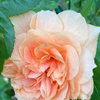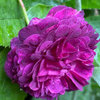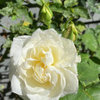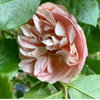Please share your experiences with active aereated compost teas
KarenPA_6b
9 years ago
Related Stories

GARDENING GUIDESGet on a Composting Kick (Hello, Free Fertilizer!)
Quit shelling out for pricey substitutes that aren’t even as good. Here’s how to give your soil the best while lightening your trash load
Full Story
LIFEIs Cabin Fever Real? Share Your Story
Are snow piles across the U.S. leading to masses of irritability and boredom? We want to hear your experience
Full Story
STUDIOS AND WORKSHOPSCreative Houzz Users Share Their ‘She Sheds’
Much thought, creativity and love goes into creating small places of your own
Full Story
KITCHEN DESIGNA Designer Shares Her Kitchen-Remodel Wish List
As part of a whole-house renovation, she’s making her dream list of kitchen amenities. What are your must-have features?
Full Story
HOLIDAYSHouzz Call: Share Your Personal Holiday Traditions
What winter rituals mean the most to you and yours? Post your stories and pictures
Full Story
FEEL-GOOD HOMESimple Pleasures: Share Supper in the Kitchen
Gather friends but leave the stress behind with a casual kitchen meal that still feels special
Full Story
GARDENING AND LANDSCAPING10 Elements of a Porch Paradise
If dreamy days with breezy chats and lazy lounging are your cup of tea, see how to pull your porch together to bring your vision to life
Full Story
MOST POPULAR33 Magic Household Cleaning Tips
Houzzers from around the world share their tips for transforming housework into child’s play
Full Story
HOME OFFICESDream Spaces: Home Offices You’d Be Delighted to Work In
Warm lighting, comfortable furnishings and pleasing views can make you want to head into your home office each day
Full Story
GREEN BUILDINGHouzz Tour: Going Completely Off the Grid in Nova Scotia
Powered by sunshine and built with salvaged materials, this Canadian home is an experiment for green building practices
Full StoryMore Discussions











jim1961 / Central Pennsylvania / Zone 6
jean001a
Related Professionals
Manhattan Beach Landscape Architects & Landscape Designers · Goodyear Landscape Contractors · Anderson Landscape Contractors · Ellensburg Landscape Contractors · Hicksville Landscape Contractors · Live Oak Landscape Contractors · Lynn Landscape Contractors · Marlborough Landscape Contractors · Methuen Landscape Contractors · Mount Kisco Landscape Contractors · Nanuet Landscape Contractors · Palm Beach Gardens Landscape Contractors · Shirley Landscape Contractors · 07920 Landscape Contractors · Camp Springs Landscape Contractorsstrawchicago z5
KarenPA_6bOriginal Author
strawchicago z5
jim1961 / Central Pennsylvania / Zone 6
strawchicago z5
KarenPA_6bOriginal Author
jim1961 / Central Pennsylvania / Zone 6
KarenPA_6bOriginal Author
strawchicago z5
strawchicago z5
strawchicago z5
KarenPA_6bOriginal Author
strawchicago z5
strawchicago z5
strawchicago z5
strawchicago z5
KarenPA_6bOriginal Author
strawchicago z5
jim1961 / Central Pennsylvania / Zone 6